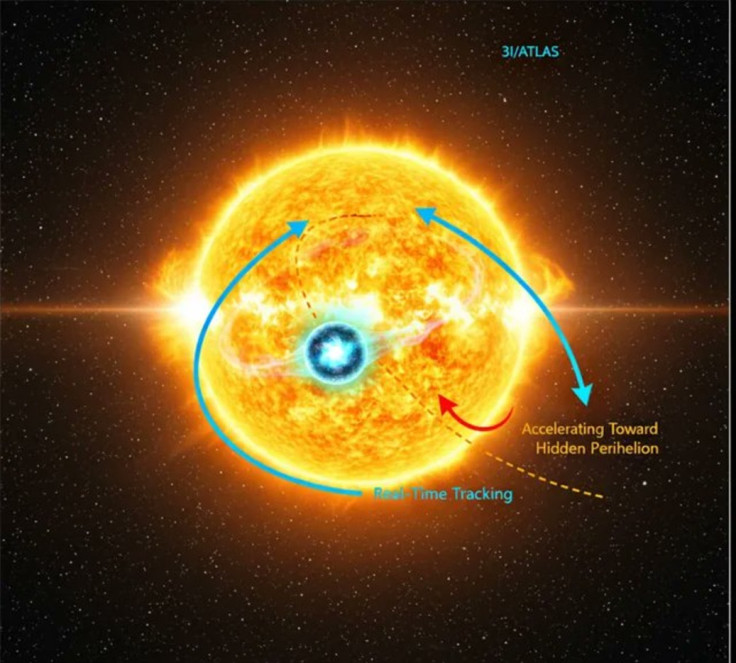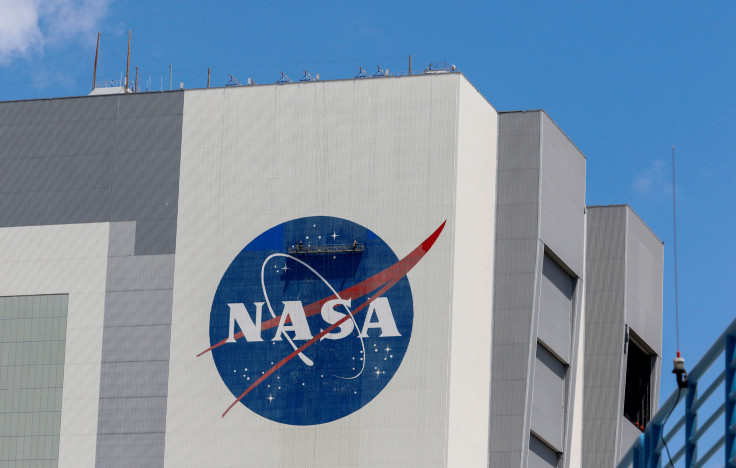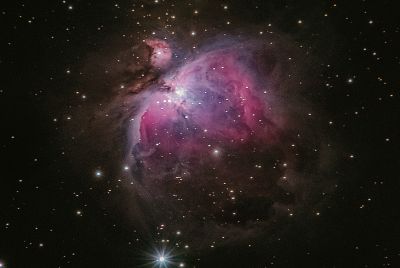Is Something Pushing 3I/ATLAS? Experts Shocked as Interstellar Object Defies Orbital Mechanics
Scientists investigate why interstellar visitor 3I/ATLAS appears to defy gravity and known orbital dynamics

Astronomers are baffled by 3I/ATLAS (C/2025 N1), a mysterious interstellar object exhibiting unexplained changes in its orbit and an unusual chemical composition.
It was discovered on 1 July 2025 by the ATLAS telescope in Chile. The object's trajectory is hyperbolic, indicating an extrasolar origin, and it displays properties unlike typical solar-system comets.
Scientists say its behaviour is unlike anything previously observed, sparking questions about what forces might be acting upon it.
Orbital Anomalies Raise Questions
According to NASA Space News, 3I/ATLAS has displayed eight distinct deviations from its expected trajectory, placing it at Loeb Scale rank 4, a category reserved for objects with highly irregular or unaccounted-for motion. This ranking positions it above both ʻOumuamua and Borisov in orbital anomaly severity.
Its hyperbolic trajectory confirms an extrasolar origin, but the deviations—too large to be explained by solar radiation or outgassing alone—have left experts debating whether an unknown external influence might be at play.
Solar Conjunction and Oberth Window
The timing of these anomalies has further intrigued researchers. 3I/ATLAS entered solar conjunction on 21 October 2025, positioning itself directly behind the Sun from Earth's perspective. This alignment coincides with what physicists call the Oberth manoeuvre window, a theoretical opportunity for maximum-efficiency trajectory modification during close solar approach.
The object is expected to reach perihelion on 29 October, at a distance of 203 million kilometres from the Sun. Experts suggest that if any propulsion or external force were acting on 3I/ATLAS, this would be the optimal moment to observe its effects.
Chemical Clues and Exotic Composition
New data from the Keck Observatory and the TESS mission have revealed further peculiarities. As reported by The Debrief, 3I/ATLAS appears to possess an unusual 'anti-tail'—a dust structure pointing away from the Sun, and a nickel-rich, iron-free gas plume. These features suggest exotic chemical processes not typically observed in Solar System comets.
Additionally, the object's coma, which is the cloud of gas and dust surrounding its nucleus, appears faint or possibly inactive, and its dust ejection rates are unusually slow. These findings challenge standard models of cometary behaviour and suggest a composition unlike anything previously documented.
Coordinated Global Response

In light of these anomalies, NASA and the European Space Agency (ESA) have announced plans to observe 3I/ATLAS post-perihelion using the Juno and JUICE spacecraft. The goal is to gather high-resolution data on the object's structure, composition, and trajectory.
While some online speculation has veered into sensational territory, officials have emphasised that 3I/ATLAS poses no threat to Earth. The object's hyperbolic trajectory confirms its interstellar origin and ensures it will exit the Solar System after its solar flyby.
Natural or Artificial Origins?
The nature of the anomalies has reignited debate over whether interstellar objects like 3I/ATLAS could be artificial in origin. While most scientists caution against premature conclusions, the object's behaviour has drawn comparisons to ʻOumuamua, which also exhibited unexplained acceleration.
What Happens Next
After its perihelion on 29 October, 3I/ATLAS will begin its outbound journey, making it easier to observe once it emerges from behind the Sun in early November. NASA and ESA expect preliminary data releases in mid-November, followed by a full spectral and trajectory report by year's end.
Scientists hope the findings will clarify whether 3I/ATLAS's odd motion is a product of natural physics or an entirely new class of interstellar behaviour. Either way, it has already reshaped discussions about how the cosmos moves—and what might move within it.
© Copyright IBTimes 2025. All rights reserved.





















